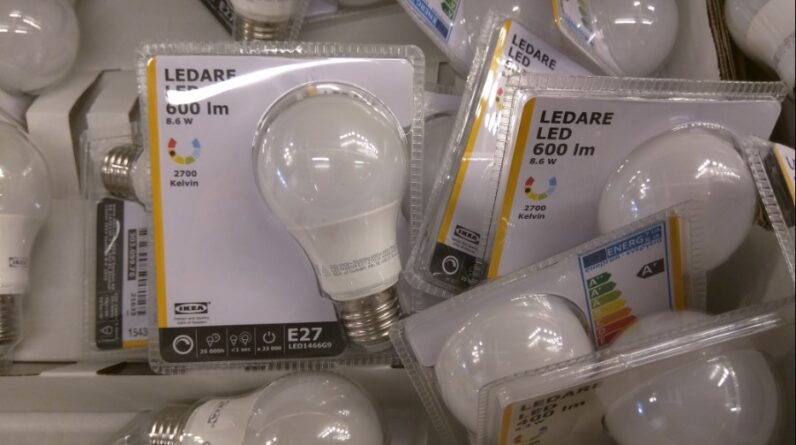
[ad_1]
LED light bulbs at IKEA store.
Credit – Maksym Kozlenko, CC SA 4.0.
America’s ban on incandescent light bulbs, 16 years in the making, is finally a reality. Well, mostly.
The Energy Department rules, which went into effect Tuesday, date back to the George Bush administration, when the process to ban most incandescent lightbulbs by 2020 began. The new rules went into effect in 2007.
However, some conservative and Republican lawmakers denounced them for interfering with consumer choice and placing undue burdens on businesses. Under former President Donald Trump, the Energy Department scrapped them in 2019.
In 2022, the Biden administration subsequently revived the Energy Department rules and they went into effect on Tuesday, August 1 – and most people didn’t notice it, possibly because companies and consumers have already started voting for better lighting efficiency with their wallets, according to the Associated Press.
What is banned under the new rules?
The new rule states that light bulbs must emit a minimum of 45 lumens per watt. A lumen is a measure of brightness.
This rule effectively outlaws the manufacture and sale of common incandescent bulbs, marking the demise of a technology patented by Thomas Edison in the late 1800s.
Incandescent bulbs provide just 15 lumens per watt, according to light bulb manufacturer Philips. In contrast, most LED bulbs will get you 75 lumens per watt, or more.
What is not banned?
Surprisingly, there is a whole slew of exempt special-purpose bulbs that will continue to be manufactured, according to the Energy Department. Here’s what manufacturers can still build and stores can continue selling:
- Appliance lamps, including fridge and oven lights
- Black lights
- Bug lamps
- Colored lamps
- Infrared lamps
- Left-handed thread lamps
- Plant lights
- Floodlights
- Reflector lamps
- Showcase lamps
- Traffic signals
- Some other specialty lights, including marine lamps and some odd-sized bulbs
As the rules reinforce existing market changes, the Energy Department believes that U.S. consumers can save almost $3 billion annually on their utility bills. Similarly, it projects that the rules could cut carbon emissions by 222 million metric tons over the next 30 years.
“Energy-efficient lighting is the big energy story that nobody is talking about,” said Lucas Davis, an energy economist at the Haas School of Business, part of the University of California, Berkeley. “Going from an incandescent to an LED is like replacing a car that gets 25 miles per gallon with another one that gets 130 m.p.g.,” he said, reports the New York Times.
[ad_2]
Source link






